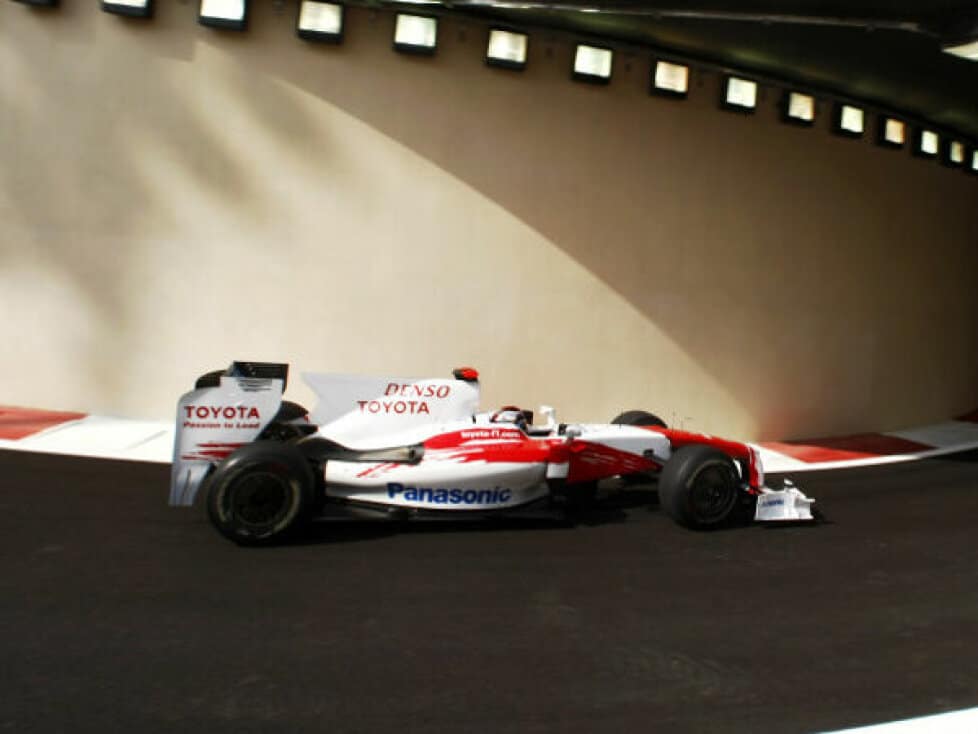Is the deal with Haas Toyota’s first step back into Formula 1? The Japanese manufacturer vigorously denies such plans.
The announcement of the technical partnership with Haas naturally raises the idea that it is the first step for Toyota to officially return to Formula 1. A lot has happened since the manufacturer pulled the plug at the end of 2009 in the wake of the financial crisis and a lack of sporting success, and the world and the championship are completely different.
The popularity of Formula 1 has increased dramatically and Toyota had to watch from the sidelines as rival Honda won championships again. Although the connections were never completely cut because individual teams still used the Toyota wind tunnel in Cologne, they had no direct line to the championship or to other teams.
However, that is now changing with the Haas deal, as Toyota’s development drivers, mechanics and engineers are involved in an official test program and work on aerodynamic development, as well as on the design and manufacture of the car.
And yet there was a clear message from the manufacturer at the official press conference on Friday in Fuji, namely that the deal is anything but a comeback. Toyota Chairman Akio Toyoda emphasized: “Please make sure that tomorrow’s headlines don’t say, ‘Toyota finally returns to Formula 1’.”
“Rather, it would be nice to see headlines and articles that encourage Japanese children to dream of the possibility that they too could one day drive the world’s fastest cars,” he says.
The partnership is more about helping Toyota pave a path into F1 for its young engineers, staff and drivers.
Driver inhibited in front of president?
For Toyoda, one of the main motivations for approving the Formula One plans was to give Toyota employees hope that they could make it to the top in motorsport. This applies above all to the drivers who compete for Toyota in Super Formula and who now have a better opportunity to gain Formula One experience.
Starting off our Technical Partnership at the home of Toyota
Sharing our news as we look to contribute to the development of the automotive industry together HaasF1 F1 pic. twitter.com/KmyXdBOFjf
— MoneyGram Haas F1 Team (@HaasF1Team) October 11, 2024
“There is something I feel when I talk to professional racers,” he says. “They all want to drive the fastest cars in the world. I guess that’s what drivers are like.”
“At the same time, I’m the one who left Formula One. So I don’t think the drivers were ever able to talk to me about it honestly. There was always this inhibited atmosphere,” Toyoda said.
Toyoda regrets withdrawal, at least privately
However, that had changed when Toyoda resigned last year from the presidency he had assumed in 2009. “In January of this year, I told everyone that I was finally a normal older man who loves cars again,” he laughs.
“I believe that the ordinary, elderly, car-crazy Akio Toyoda has always regretted, deep in his heart, that by withdrawing from Formula 1, he blocked the path for young Japanese people to drive the world’s fastest cars.”
“At the same time, I would like to add, under the watchful eye of the media, that I still believe that my decision as President of Toyota to leave Formula 1 was not wrong.”
Toyota back in F1? ‘That’s not the case!’
Tomoya Takahashi, President of Toyota Gazoo, also confirms Toyota’s statements that the partnership is not a comeback: “Some might conclude that Toyota is back in Formula 1, but that is not the case,” he says.
Instead, he emphasizes that Toyota’s primary goal is to improve the skills of its own drivers and staff. “Formula One is the pinnacle of motorsport,” he says. “The active role of F1 drivers, engineers and mechanics can instill dreams, aspirations and goals in children.”
“For Toyota Gazoo Racing, it is extremely important to convey this hope to the children who will be responsible for the automotive industry of the future,” said Takahashi.
This means that the partnership will be used to intensify the driver development program and improve the understanding of the engineers and mechanics involved in Haas’ testing program, data analysis and aerodynamic developments.
“I believe this will lead to the element of the product, in other words, the development of human resources that can provide feedback for production vehicles.”





